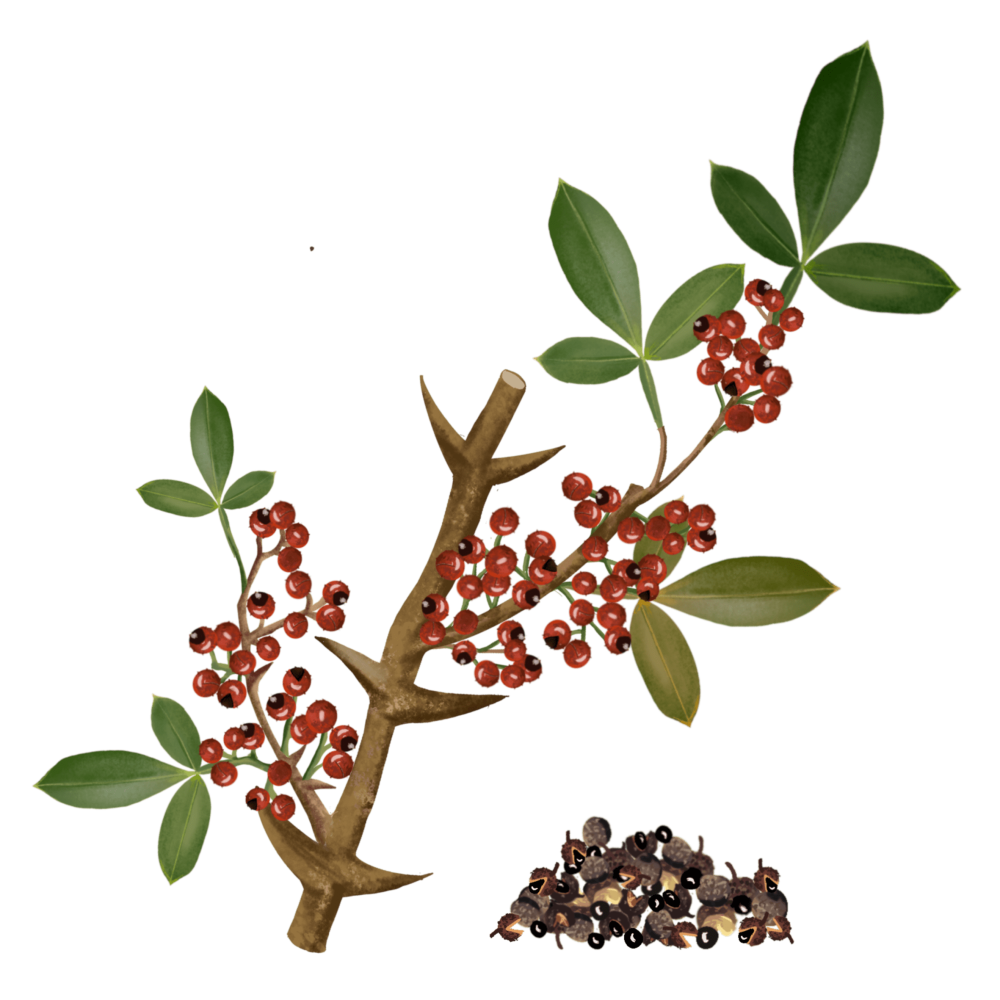Timur Pepper

Latin name: Zanthoxylum armatum
Other names: Winged Prickly Ash, Nepali pepper
Uses: spice, oil extract, medicinal
What is Timur pepper?
Timur pepper is a relative of Sichuan pepper commonly found across the Himalayas, from Kashmir to Nepal. Despite its name, it is unrelated to and unlike any chile or peppercorn. The reddish berries grow in clusters on the tree’s thorny, densely foliated branches. Each fruit contains a precious black seed; the reddish husk is dried and powdered along with the seed or used whole.
Why is Timur pepper healthy?
Different parts of the winged prickly ash are used extensively by tribal communities in northeastern India, in food as well as all kinds of herbal formulations. The fruit, branches, and thorns are used for relief from toothaches, and young branches are used as toothbrushes. Timur extracts also go in commercial toothpaste. The seeds and fruit are ground to make a stomach tonic, for their cleansing and carminative properties.
What does Timur pepper taste like?
Like other Zanthoxylum plants, timur peppers have hydroxy-alpha sanshool, a molecule that produces a buzzing sensation in the mouth. Less numbing than Sichuan pepper, timur has more citrusy overtones than its more famous cousin.
How do I use Timur pepper?
The Bhotiya community of Kumaon make a warming winter soup called hag and a chutney called dunkcha from the berries, as well as alcoholic preparations from the plant. Infuse salt with timur for a zesty seasoning.
What does Timur pepper pair well with?
Besides chutney, use timur to flavor roast potatoes, or in any recipe that calls for Sichuan pepper.
Where does Timur pepper grow?
Once sourced from wild shrubs, timur is now widely cultivated, especially in Nepal. It also grows in parts of Bhutan, Tibet, Kumaon, northeast India, Taiwan, the Philippines, Malaysia, Pakistan, and Japan. Timur can be found in China, alongside other Zanthoxylum species. A related plant, teppal or triphal (Zanthoxylum rhetsa), grows in the Konkan belt and Maharashtra.
How to buy Timur pepper:
Look for whole dried seed pods and grind them yourself, since pre-ground pods lose their aroma quickly.
Fun Timur pepper fact:
Once the shrub’s fruiting season is over, Garhwali tribes harvest the wood to make walking sticks, which are sold at various Hindu pilgrimage sites in the Himalayan region.



